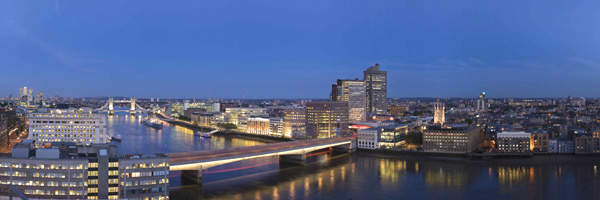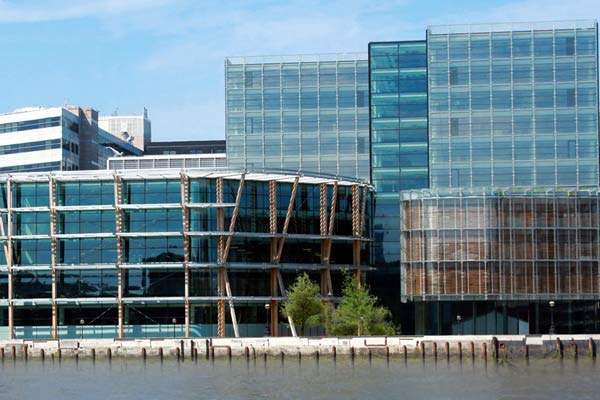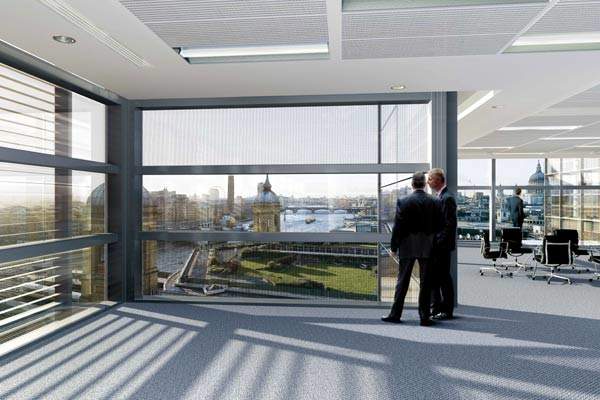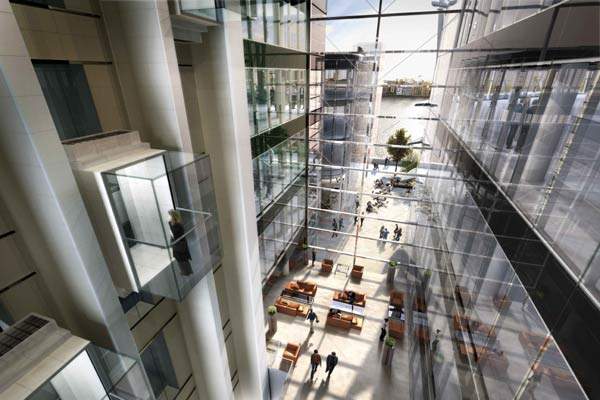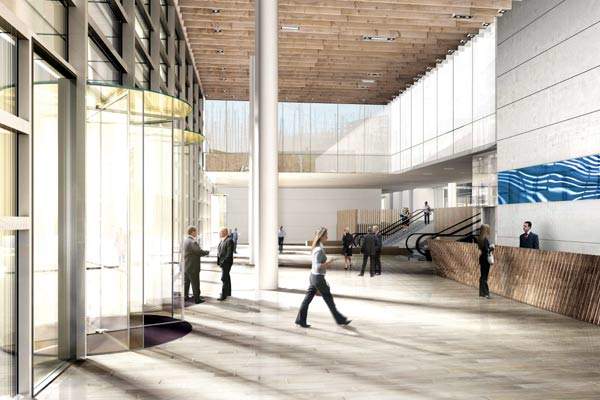Watermark Place is a mixed-use commercial development located on the north bank of the River Thames in London, UK. Being developed on a heritage maritime site, the project attempts to visually incorporate the significant past of London’s maritime history together with the buzzing ambiance of a dynamic city.
Designed by Fletcher Priest Architects, construction of the building began in 2007 and was completed in September 2009. It has 11 storeys and houses 500,000ft² of office space with typical floor plates of 34,000ft² to 54,000ft².
Watermark Place was developed by City Offices Real Estate (CORE) and funded by Oxford Properties and UBS Global Asset Management. It has been recently let out to the Japanese bank Nomura.
Design and architecture
Watermark Place stands on the footprint of Hubbard Ford & Partners Mondial House, which was built in 1975, and retains 30% of the basement of the previous development. The foundations were supplemented by new piles and pile caps. The building has been designed as a series of individual units, putting the lower blocks on the waterfront and the two taller ones to the north. It stands on a plinth 5.2m above sea level to reduce the risk of flooding from the Thames.
Watermark Place features a timber frame structure on the riverfront, with the back clad in sheer glass planks animated with a dappled colour palette, with the huge, 1m² oak timbers recall the maritime heritage the site represents.
The pixellated façade has been created by taking a photograph of rippling water and running it through several Photoshop filters to create a dot-matrix interlayer that changes the appearance of the building and provides solar shading.
The rotating timber louvres cladding the south-east building protect it from sunlight. The two riverside pavilions have curved forms, timber sunshades and roof gardens and are articulated to be separate structures, although part of a single composition. The fifth and sixth storeys step back to provide views across the river to St Paul’s Cathedral.
The entrance and reception area contain a two-storey transfer truss supporting the building over the length of its eastern façade. Raked steel columns encased within an elliptical concrete skin support the truss. The columns are founded on the retained basement raft slab below. A linear atrium, inside the building, points towards the river with an 18m-deep space on either side, with bridges and glass elevators. The huge coffee table drums on the ground floor serve as displacement air inputs. Dark stones and glass were used in the lobby and atrium, and the granite used for the walls is sandblasted GRC in large planks.
Angel Passage below the building has been widened and pedestrianised, encouraging its use as a walkway. The riverside blocks have been designed at an angle to catch sunlight, forming the largest south-facing public riverside space in the city between the Palace of Westminster and the Tower of London. The passage is framed by raised planters, timber benches and a pair of polished black granite water features.
The interior design will be decided by tenant Nomura.
Sustainability
Sustainability issues were high on the architect’s agenda while designing the building, which will achieve a low carbon footprint. The building reused one third of the existing structure and eventually reduced the waste resulted from the demolitions. Moreover, 95% of all demolition materials used in the construction were recycled and organic paints were used on the walls.
Some of the sustainable measures include passive double-skin ventilated façades, five-storey brise-soleil structure and high performance argon filled glazing for solar gain control. Green roofs have been incorporated into the design for rainwater attenuation and to support ecology and improve the efficiency of the building’s thermal envelope.
The roofs have extensive gardens and terraces at the lower levels. The top floor’s roof is sedum planted, contributing to the biodiversity of the site. The installed 800m² of photovoltaic panels at roof level provide renewable energy equal to 50kW peak electrical output. Wind turbines provide power to the facility.
Rainwater collection tanks installed in the basement are used to collect harvested rain water from the roofs. There is also a grey-water recycling facility that collects waste water from the basins and filters, and treats and recycles it for toilet flushing. The cladding has been designed to exceed the minimum requirements as set by the new part L2 regulations by almost 20% to 25%.
Awards
For its use of extensive sustainable measures, Watermark Place has achieved an ‘excellent’ grading by the Building Research Establishment’s BREEAM accreditation system.
Watermark Place also won the London Merit Award 2009 from The Institution of Civil Engineers (ICE) for designing with minimal environmental impact by using innovative energy and resource management processes.

